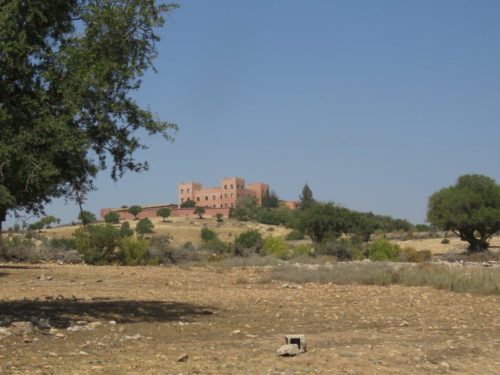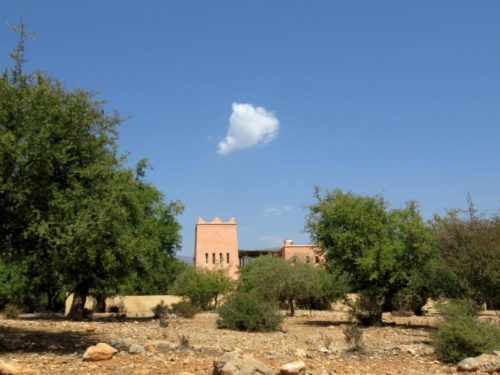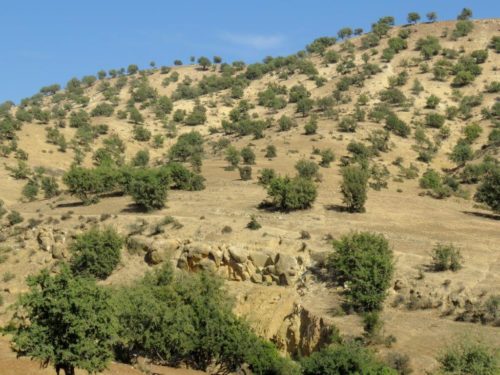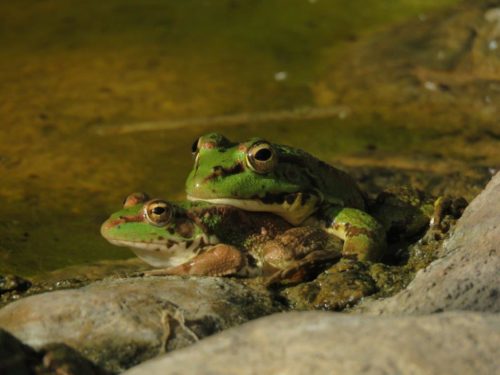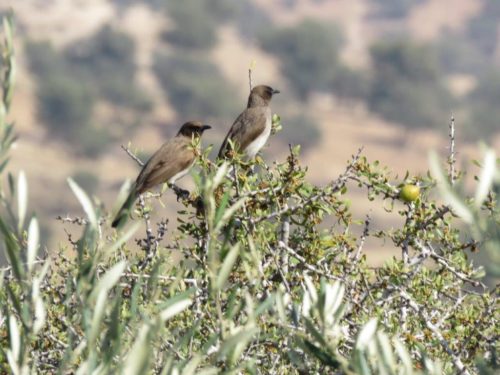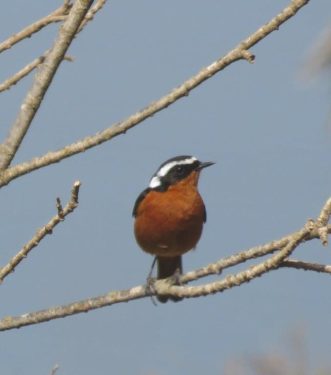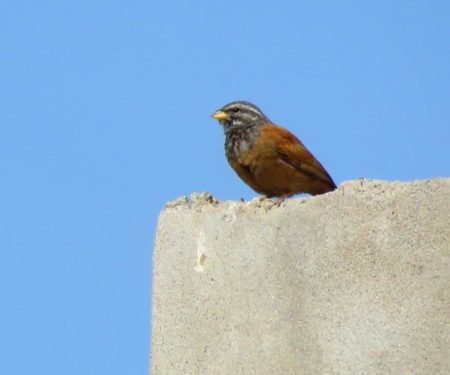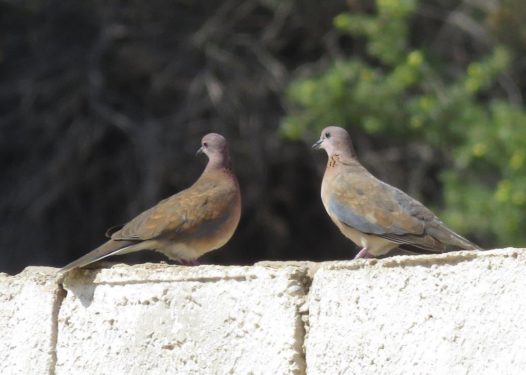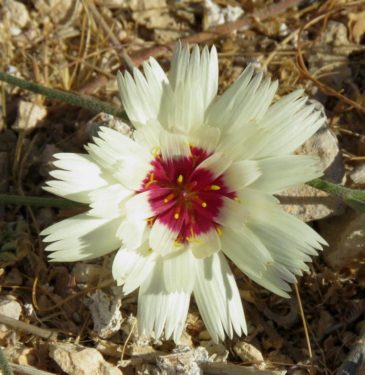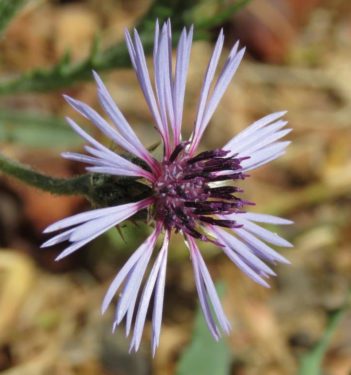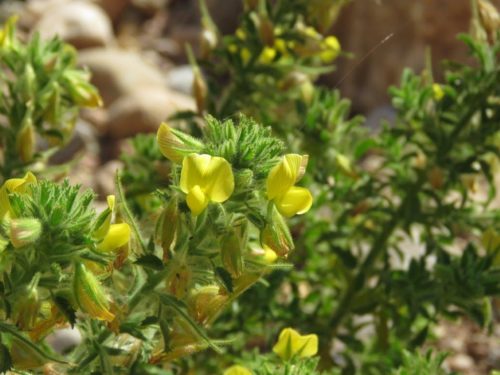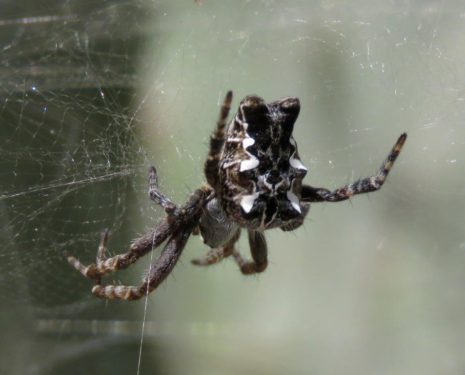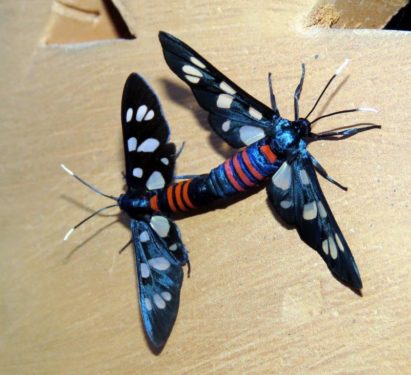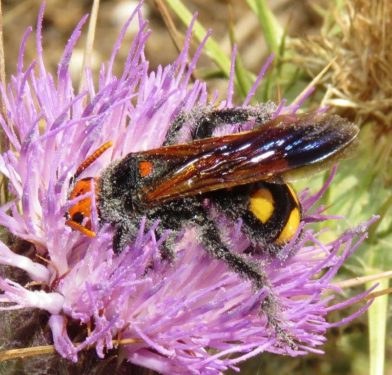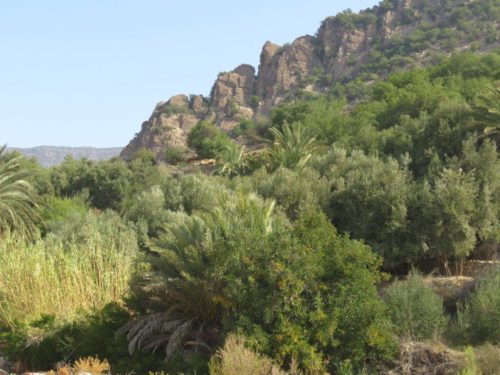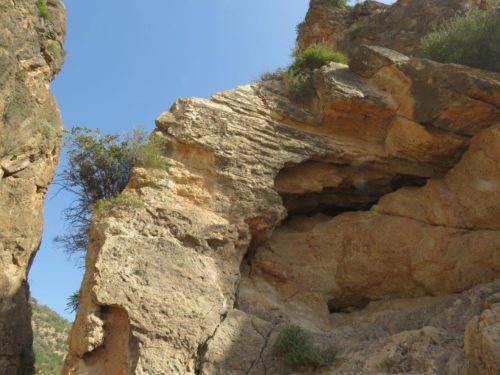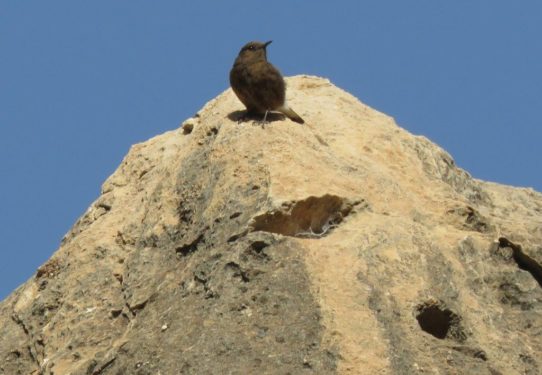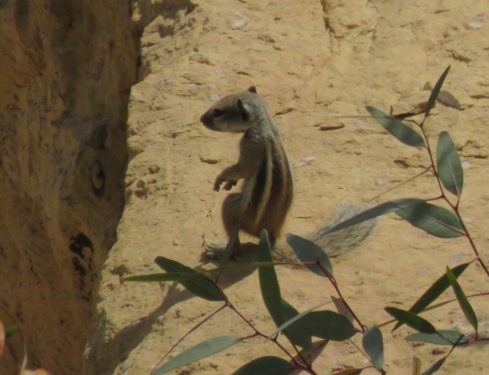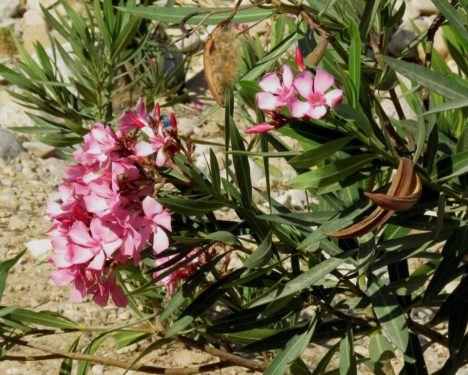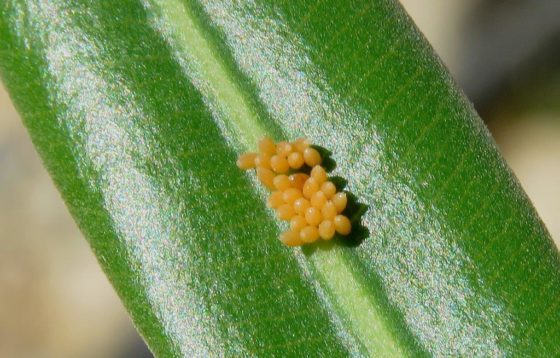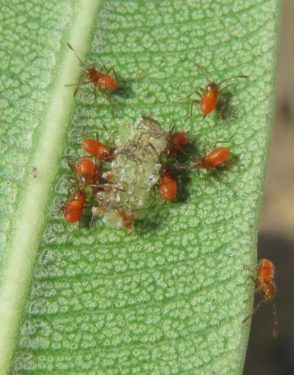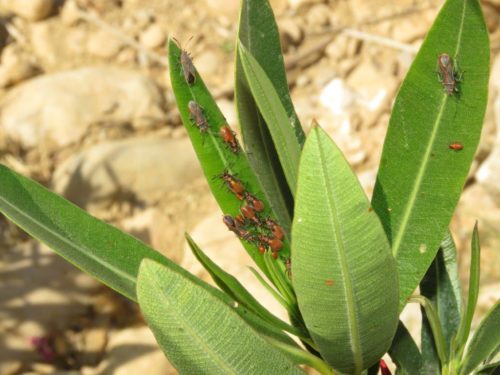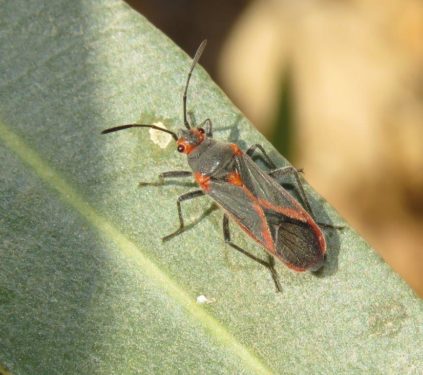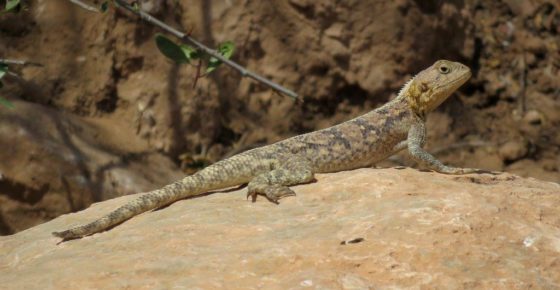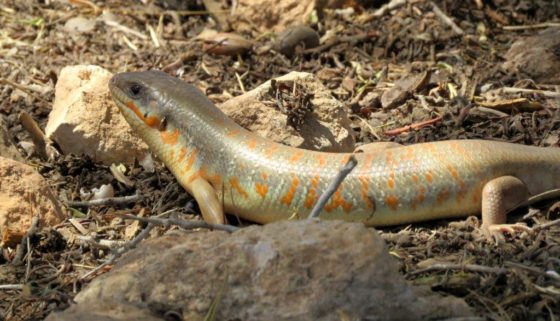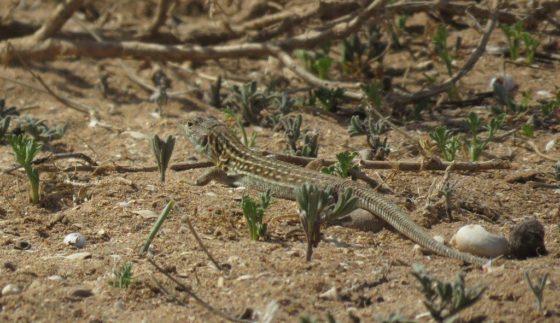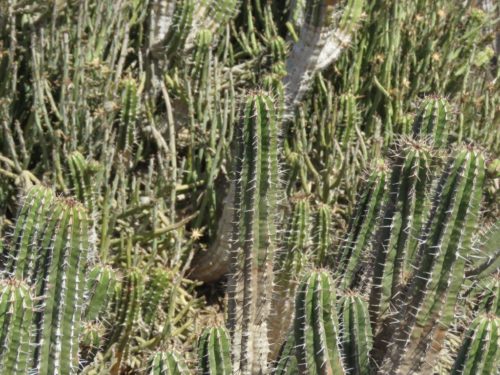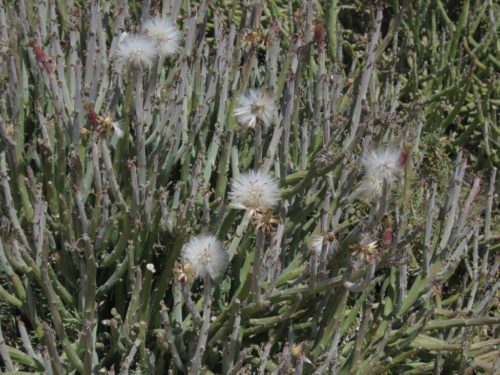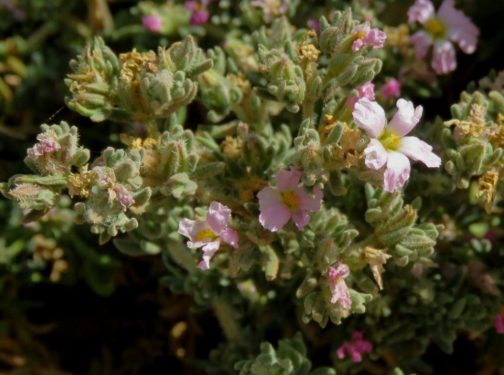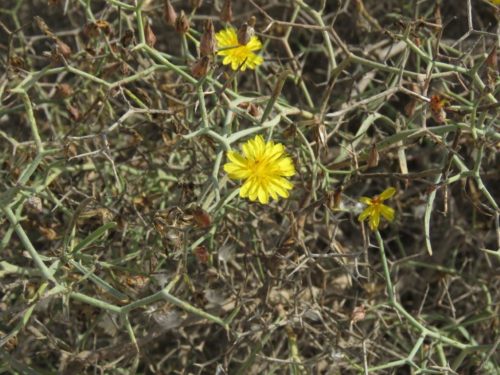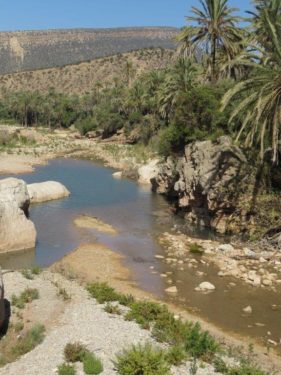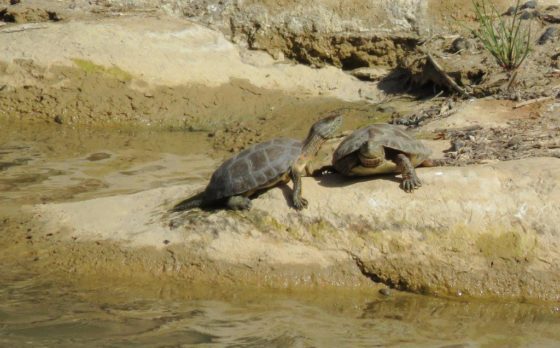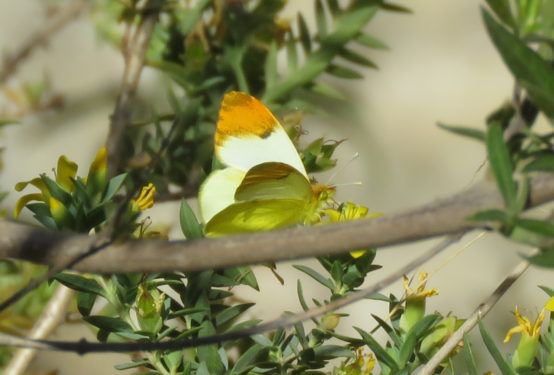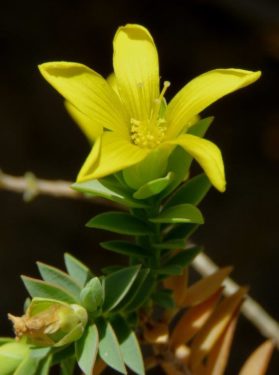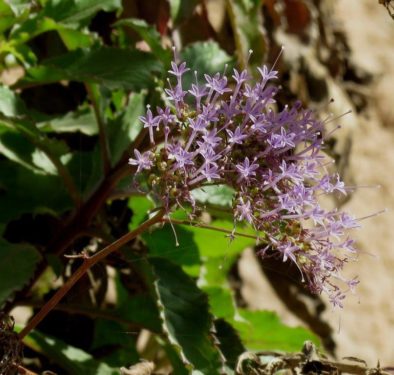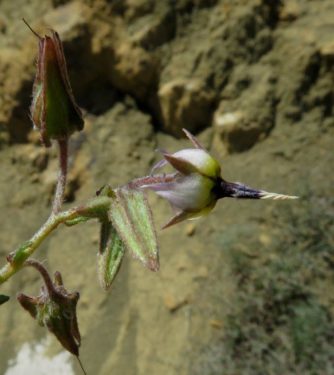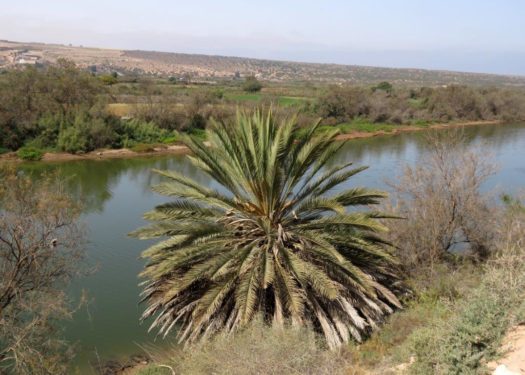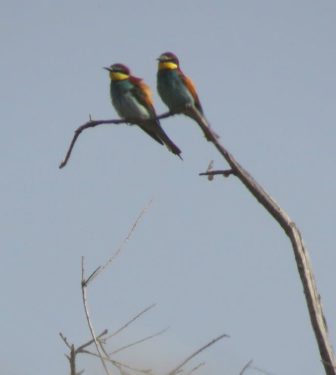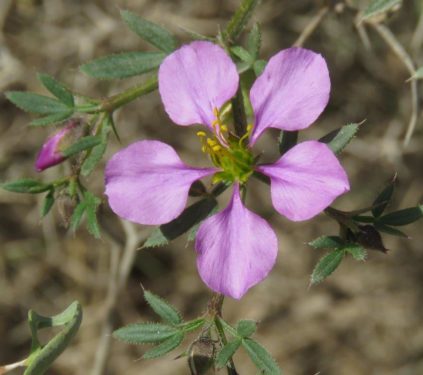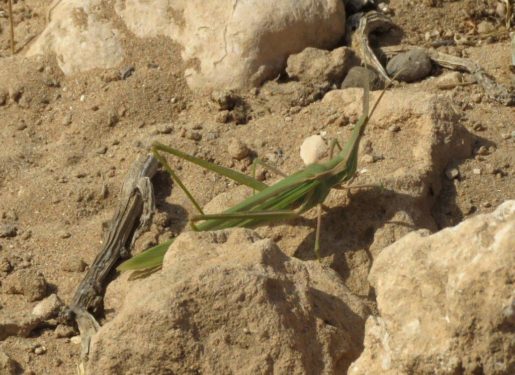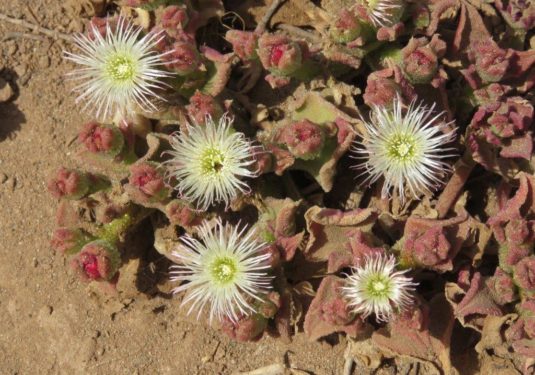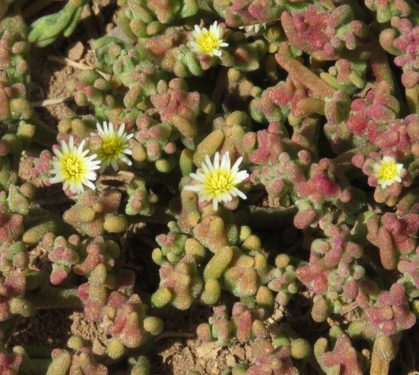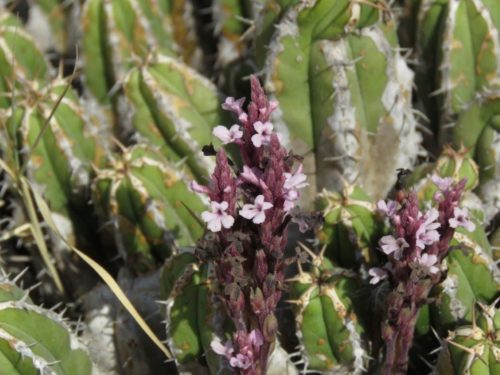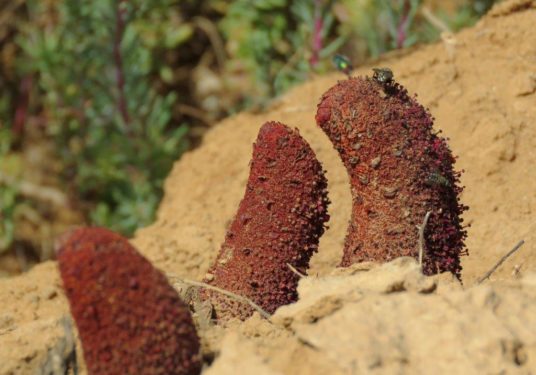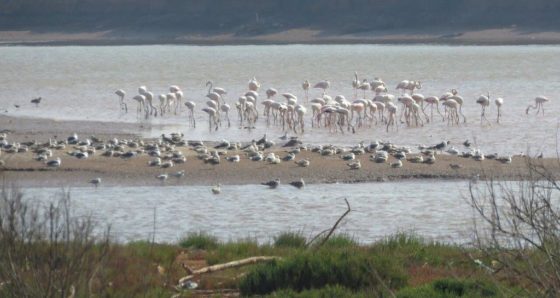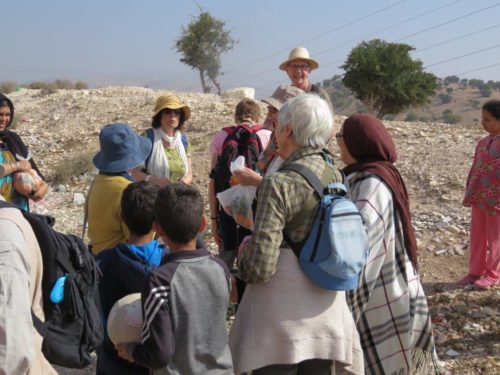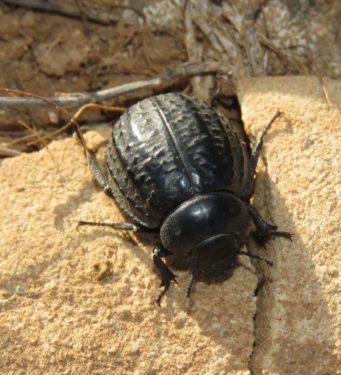My first experience of southern Morocco, indeed of North Africa, last week was a hot one: several days peaked at 30°C, some 10 degrees hotter than expected for mid-March, and just one cloud in the sky, on one day only!
Our Honeyguide/N&S Wildlife & Walking tour there came after some 18 months without meaningful rain, and the drought is beginning to take its toll on the landscape. At a time when the rolling foothills of the Atlas Mountains should be ablaze with a colourful array of wild flowers, from spring bulbs to poppies and other annuals, it was a scene of parched aridity, the bones of the land clearly visible through its hide. Almost the only green came from deep-rooted Argan trees, so important to the local economy, naturally studded evenly across the stony plateaus and slopes in an attempt to make best use of what rainfall or condensation comes their way.
In contrast, the grounds of our hotel, the wonderful Atlas Kasbah Eco-lodge, were remarkably lush and productive, the source of most our food for the week, watered by our own efforts, as translated through the biofiltration water purification plant, complete with its thriving population of Saharan Marsh Frogs!
Although quiet in the midday heat, the gardens came alive at night, trilling Tree Crickets at every turn, mingling with wailing Stone Curlews, occasional Red-necked Nightjars and the wild yelperings of a family of (presumed) Ruppell’s Foxes from further afield. At dawn and dusk, Common Bulbuls gave liquid body to the soundscape, the repetitive song more structured but of a similar fluty tone to their conversational burbles throughout the day.
Other unfamiliar birds in the garden included a couple of pairs of Moussier’s Redstart, House Buntings all over the buildings, and the occasional pair of Laughing Doves, which all underline the significance of the Mediterranean as a barrier, at least to non-migratory species.
In and around the garden were a number of attractive native flowers, like Catananche arenaria (a Cupid’s-dart), the endemic knapweed-like Volutaria maroccana, and the sticky Large Yellow Rest-harrow.
Garden invertebrates included Long-tailed and Lang’s Short-tailed Blues, Brimstone and Cleopatra, Cage-web Spiders in their 3D webs, and most dramatically, Orange-headed Mammoth-wasps Megascolia bidens, always creating a stir when one appeared, and a mating pair of African Nine-spotted Moths Amata alicia.
Over the week, we visited a number of sites, all within an hour of so of home, and many much closer, such as the gorge at the head of our valley, home to Black Wheatears and Barbary Ground-squirrels.
Oleander was flowering profusely in the dry riverbeds, always with thriving populations of the Oleander Seedbug Caenocoris nerii, at all stages of development from egg to adult. Few creatures can withstand the toxic chemical armoury of Oleander, but these bugs can, and presumably (from their warning coloration) sequester the poisons for their own defences.
Just outside the gorge were our best reptiles of the week, Bibron’s Agama and Algerian Skink, the first a mini-dragon and the second a cylindrical ‘snake with legs’ that seemed to have been eating tomato ketchup. Messily!
The coast north of Agadir gave us one of the rarest of birds, Northern Bald Ibis. Although access to the famous breeding site at Tamri was not permitted for fear of disturbance, the warden (whose role is part-funded by Honeyguide conservation contributions from this holiday) was happy to show us to a vantage point away from the breeding cliffs which gave us excellent flight views. And that has to be when these admittedly rather ugly birds look their best! In fact we witnessed a single flight of some 75 birds, about one third of the local population, more than a tenth of the entire Moroccan population (which forms the vast bulk of the world population) in just one flock, wheeling across the desert-like perched sand dunes.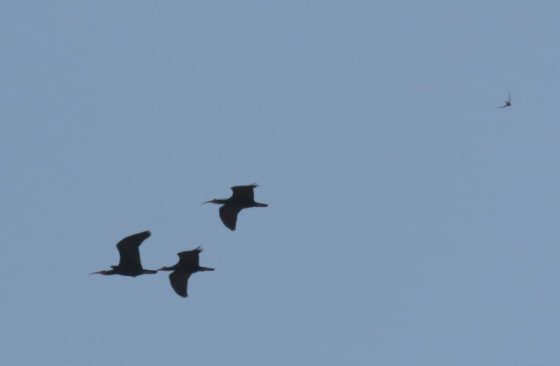
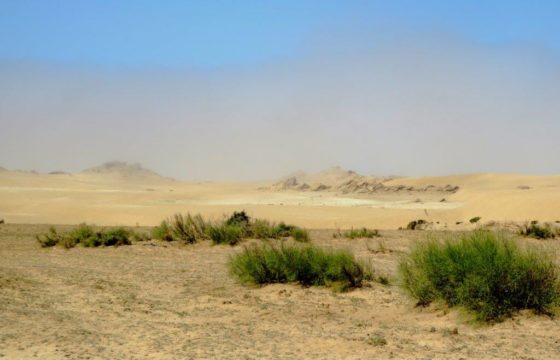
Also skittering around the sandy and stony ground, no doubt trying to avoid the attention of hungry Ibises were several examples of the Moroccan Fringe-toed Lizard Acanthodactylus margaritae, a species described as recently as 2017, and found only in the stretch of Atlas coast from here to a few kilometres south of Agadir.
A little to the south, around Cap Rhir, our attention turned to a habitat that is as rare, if not rarer, than the Ibis on a world scale: Macaronesian Euphorbia scrub, known only from the southern coast of Morocco, and some of the mid-Atlantic islands, and everywhere threatened by tourism infrastructure and over-development. It is dominated by a series of succulent plants, particularly the cactus-like Euphorbia officinarum, the tree-spurge-like Euphorbia regis-jubae, a succulent groundsel Kleinia anteuphorbia, its ‘dandelion-clock’ seed heads revealing its family affiliations.
Succulence is a growth form that provides some resilience against drought conditions, the fleshy stems acting as a reservoir to store water when it is available, and the spines, latex and other poisons prevent the stored water being available as a convenient source for any passing browser. Other ways of tackling the same problem were shown by Sea-heaths (here Frankenia thymifolia), with very hairy leaves in a cushion-like growth, to simply having no leaves, just living as a photosynthetic roll of barbed wire, like Launaea arborescens.
Inland from here, penetrating the westernmost outpost of the High Atlas, we visited Paradise Valley….which didn’t really live up to its name: great scenery, yes, but with added, major, noisy, dusty road improvement works, the ever-present scourge of plastic litter, and precious little water in the river, even by the oasis and its Date Palm grove.
But we persevered, and watched Grey Wagtails by the river with basking Sahara Pond Terrapins, along with a pair of Bonelli’s Eagles overhead, Two-tailed Pasha and Moroccan Orange-tip butterflies (the latter of the southern Moroccan form androgyne, with reduced underwing markings), and several interesting plants, including Hypericum aegyptiacum, Trachelium caeruleum (Throatwort), and the subtly beautiful borage relative Trichodesma calcaratum.
South of Agadir, we spent time at both ends of the Souss-Massa National Park. The south end, relatively quiet, along the Massa River produced Bee-eaters in abundance, their jewel-like properties if anything enhanced by the shimmering heat-haze, Plain Tiger butterfly and Nosed Grasshopper, lots of the pink-flowered Fagonia cretica, and two species of Mesembryanthemum.
And two very exciting parasitic plants: Striga gesnerioides on Euphorbia, and the remarkable, phallic Red Dog-turd Cynomorium coccineum, sprouting fungus-like from the ground amongst the Shrubby Sea-blite, its presumed host.
At the northern end, near the mouth of the Souss, despite Sunday afternoon disturbance, we found our largest concentration of water birds, including an array of waders, bound for northern shores, Sandwich Terns, maroccanus form Cormorants, a feeding Spoonbill, and then at the last gasp as we headed away, some 80 Greater Flamingos.
So despite the sometimes challenging conditions, we managed to find plenty of interesting and unfamiliar wildlife, helped along by the wonderful hospitality and food at the Atlas Kasbah and the unfailingly friendly Berber locals. Indeed one of the high points of the trip was a walk through the nearby village of Elmaasa. We soon attracted a gaggle of village children who then walked with us, scurrying off every so often to find a new flower for us to show the group. And we reciprocated with beetles, specifically the large, lumbering darkling beetle Pimelia chrysomeloides. The smaller girls initially shrank away from handling it, but when first one of the braver boys and then one of the older girls took their cue from us and the young ones started to follow suit, we felt we might just have left a little bit of Honeyguide stardust behind us….
